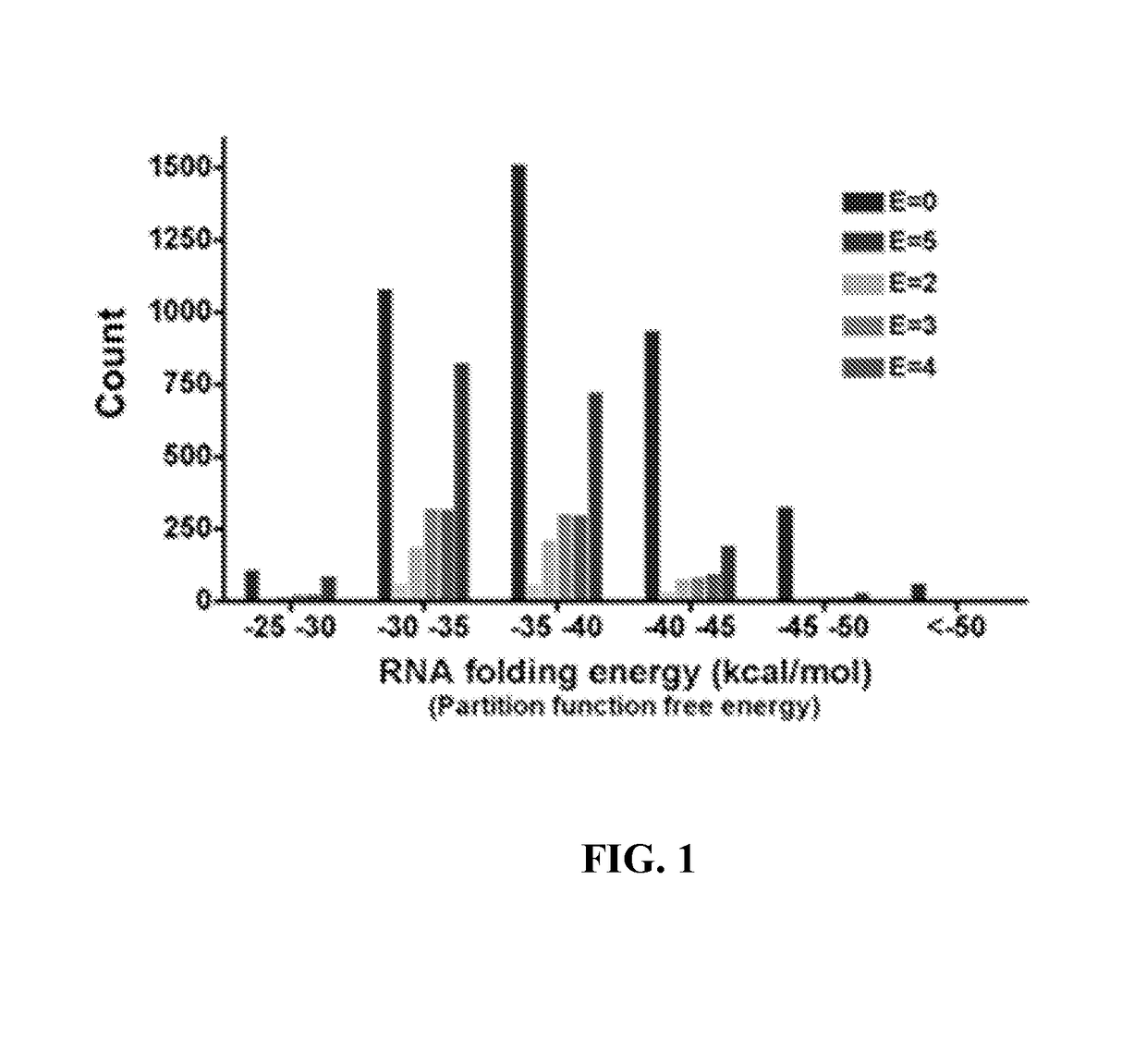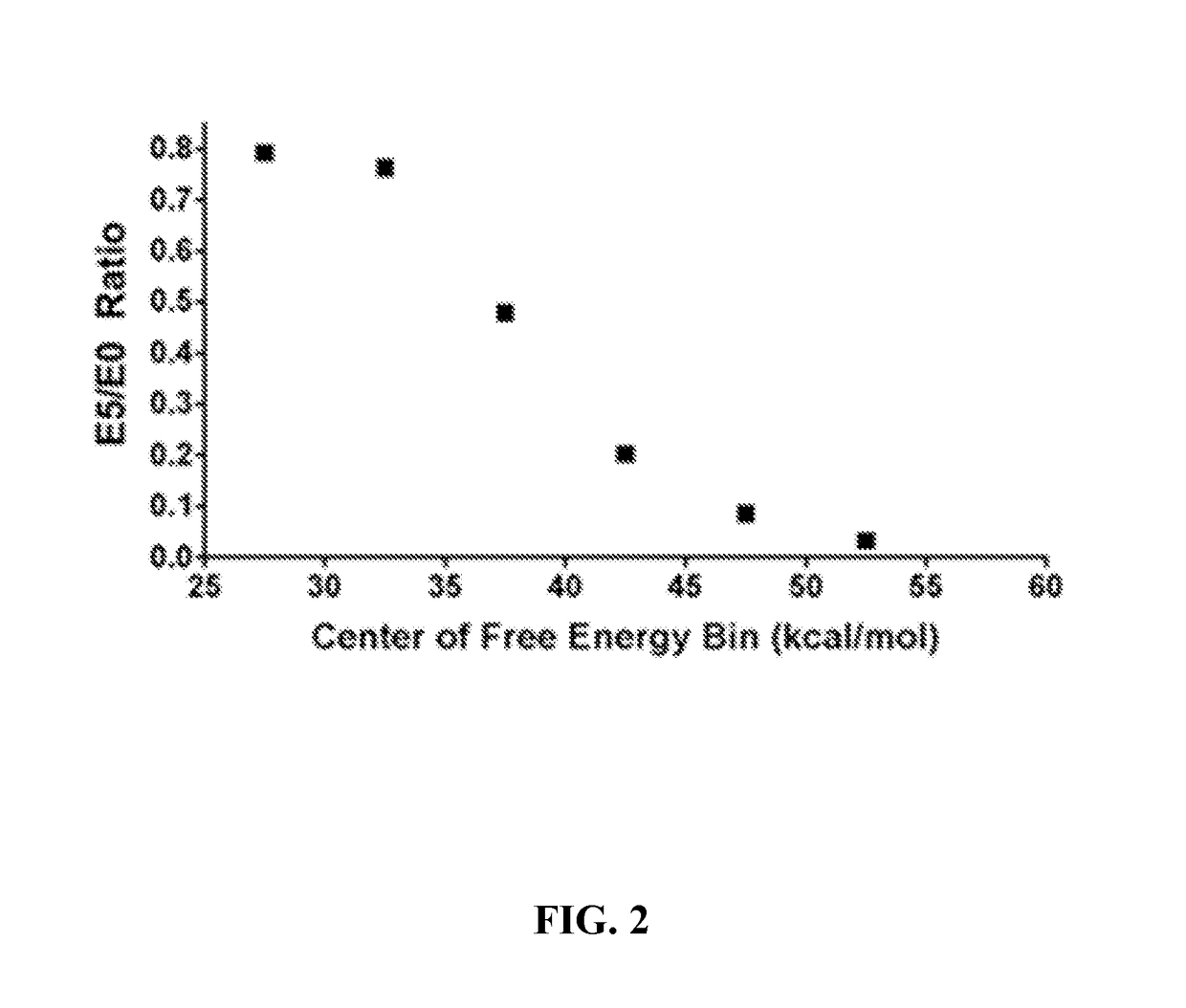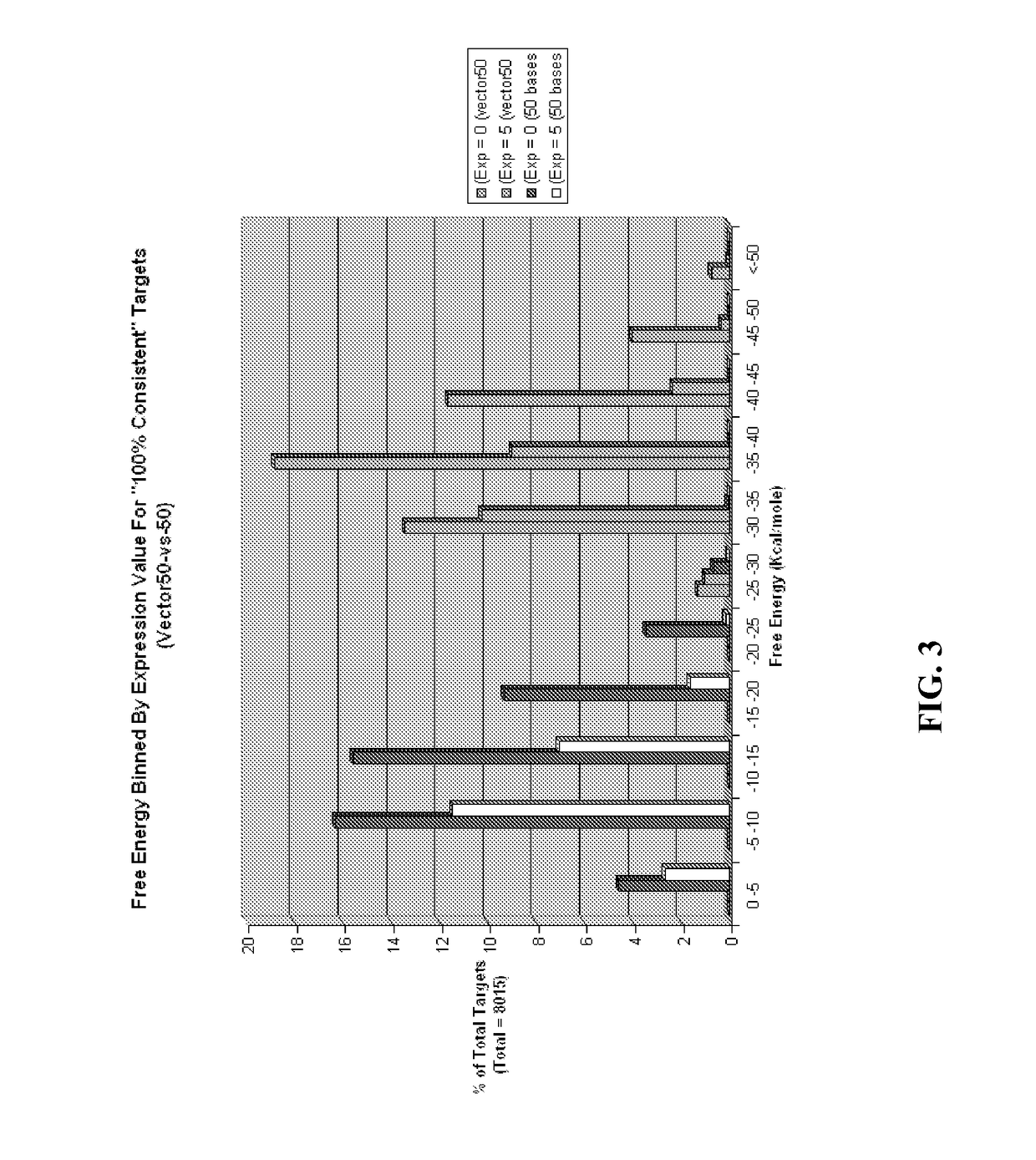Methods for Altering Polypeptide Expression
a polypeptide and expression technology, applied in the field of biochemistry, structural biology, biotechnology, can solve the problems of low expression yield, difficult to predict the difficult to achieve so as to increase the predicted free energy of folding and increase the expression
- Summary
- Abstract
- Description
- Claims
- Application Information
AI Technical Summary
Benefits of technology
Problems solved by technology
Method used
Image
Examples
example 2
redicting Probability of High Protein Expression Level from RNA Sequence
[0289]The codon repetition rate is defined as: r= where is the distance to the next occurrence of codon ci. For example, “AAA.CGT.CCG.CGT.AAA” r=average(1 / 4, 1 / 2, 0, 0, 0)=3 / 20. The binary multiple logistic regression is a linear model in explanatory variables xi for the log odds of high expression, θ=log [E_5 / E_0]=A+Σtβtxt. The predicted probability of high expression is:
π=E?E?+E?=exp{θ}1+exp{θ}.?indicates text missing or illegible when filed
The number of degrees of freedom for codon variables is one fewer than the number of codons because of the constraint 1=Σfc. In the multiple logistic analysis in FIG. 11, ATG is removed, making slope βATG=0 with its contribution absorbed into the constant A. The R statistics program [R Core Team (2013). R is a language and environment for statistical computing. R Foundation for Statistical Computing, Vienna, Austria. http: / / www.R-project.org / ] is used to compute the model p...
example 3
or Building Synonymous Sequences
[0290]Synonymous sequences were designed with two methods and then tested experimentally. In the 6AA approach, codons for six amino acids were changed to the specified codon in Table 1. Although no explicit free energy optimization was performed with the 6AA method, the average free energy density was also more favorable in the genes that were tested. In the 31C-FO approach, the free energy of the head+pET21 expression vector was optimized to be as high as possible (i.e., with the weakest mRNA secondary structure) and the free energy of the tail was optimized to be near −10 kcal / mol for 48mer nucleotide windows, using only the subset of codons listed in Table 1 below. With 31C-FD, the free energy was de-optimized to be as low as possible (with the strongest mRNA secondary structure) with a subset of codons.
TABLE 1DegeneracyWT6AA31CAla44GCT,GCAArg6CGTCGT,CGAAsn22AATAsp2GATGATCys22TGTGln2CAACAA,CAGGlu2GAAGAAGly44GGTHis2CATCAT,CACIle3ATTATT,ATCLeu66TTA,T...
example 4
g Correlations Between Protein Expression and mRNA Folding Free Energy of the First ˜50 Coding Bases and of the Rest of the Gene
[0291]A data set of diverse polypeptide sequences (from the Northeast Structural Genomics Consortium) with quantified gene expression was studied. Polypeptides were quantified independently in categories E0 (no expression) to E5 (highest expression). The polypeptide sequence data set contains more than 7000 mRNA sequences with less than 60% amino acid identity. These polypeptide sequences were drawn from about 20,000 in the NESG (Northeast Structural Genomics Consortium) pipeline that were expressed and purified in a consistent manner. The polypeptides were evaluated for expression and solubility in order to determine the features that correlate with high expression (Acton T B et al. (2005) Robotic cloning and polypeptide production platform of the Northeast Structural Genomics Consortium. Methods in Enzymology 394:210-243; Price W N et al. (2009) Nat. Biot...
PUM
| Property | Measurement | Unit |
|---|---|---|
| partition-function free-energy | aaaaa | aaaaa |
| length | aaaaa | aaaaa |
| free-energy | aaaaa | aaaaa |
Abstract
Description
Claims
Application Information
 Login to View More
Login to View More - R&D
- Intellectual Property
- Life Sciences
- Materials
- Tech Scout
- Unparalleled Data Quality
- Higher Quality Content
- 60% Fewer Hallucinations
Browse by: Latest US Patents, China's latest patents, Technical Efficacy Thesaurus, Application Domain, Technology Topic, Popular Technical Reports.
© 2025 PatSnap. All rights reserved.Legal|Privacy policy|Modern Slavery Act Transparency Statement|Sitemap|About US| Contact US: help@patsnap.com



